Hey all, Danny from TFG Radio here, and today, well, I am going to shift gears into the other major part of my life, education. If you are like me and the other 40 million people under lock down here in Cali thanks to COVID-19, there isn’t a whole lot of game time at the shop right now. If you are also like me and have a child home full time, well, now you’re really deep in the muck. What I want to talk about today is how to get some hobby fix while also helping your children continue to learn while they are home.

Before I get too deep into it, let me assure you that yes, I do know a little something about this. I’ve been a professor of English for 13 years now, but my focus has been on composition and pedagogy, so while I love to yammer about books, most of my teaching experience is in the more nuts and bolts aspect of writing and learning how to write (and learning how to teach). I’ve also taught my nephews and numerous younger cousins how to do basic math and reading using various games. Because I am a huge nerd, when I had my son, I went deep into Child Development pedagogy as well.
Also, before I launch into it, if you are now home with your younger children, remember that unless you are an educated and trained teacher, you are not going to be super effective at it, and that’s ok. Don’t feel like you suddenly have to be perfect at a job that very few are perfect at (and I wouldn’t include myself in the perfect category either), so my advice is more on how to have fun while also fostering important developmental skills. Ok, let’s do it:

Ages 0-3 skills to develop: Language, Counting, Colors, Shapes, Social-Emotion intelligence, and Bonding:
I wouldn’t risk giving a toddler easy access to small objects like dice or models that can break into smaller pieces. This is both a choking hazard and a model hazard. My 3.5 year old son has destroyed more than a few models that I didn’t put out of reach.
If you want to engage a child of this age, the best thing that you can do is to read to them. Now, plenty of the Grimdark is not really appropriate, but even reading things like rules or doing what I call “censored readings” can spark their imagination and instill both a love for the hobby but also a love for the act of reading. Any Child Educator worth their salt will tell you that reading to your child as much as possible, with as much verve and care as possible, is one of the best things that you can do. It develops their language skills and social skills while also increasing your bonding. If you have a new book with new rules, this is a great way for you to become familiar with stratagems or what not while also doing something beneficial for your kid’s brain.
Remember: stories don’t have to have a lot of action or conflict at this age for them to be meaningful. Focus on the skills that you want your child to start to internalize (they won’t do it, but getting that foundation now is good via story telling) like cleaning up, sorting, dealing with disappointment, managing emotions, and managing their bodies. I have definitely used my old Lizardmen Fantasy books to read to my son about the importance of cleaning up the Spawning Pools or organizing the world to make it easier to play. When it comes to the artwork, please censor as you see fit as some of the artwork can be scary to a young child.
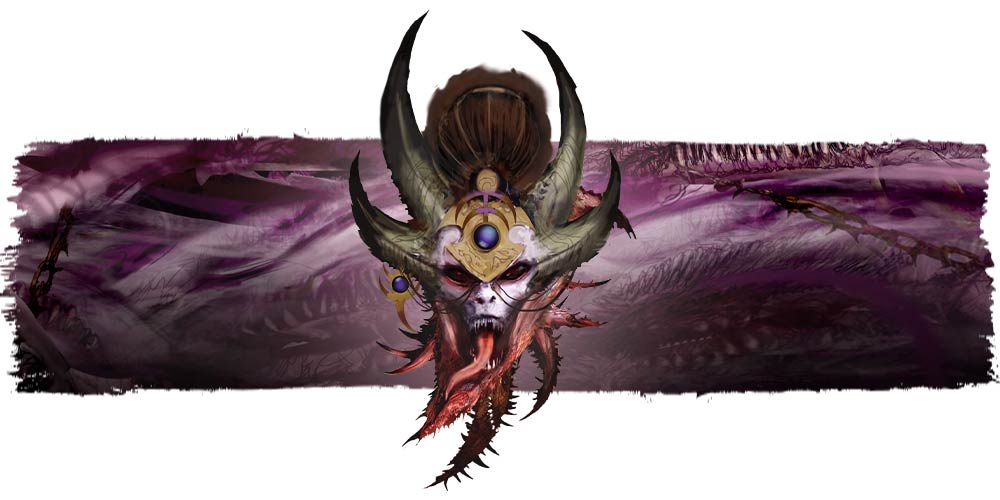
The artwork also gives plenty of opportunities to try and have them identify shapes and colors. Basic counting is important too, something that the Armies on Parade section of different codexes and what not have ample of. You can also take models that you have worked on and see if they can identify the colors used or what shapes they see in the model. Just don’t actually hand them the model. You can also help them develop fine motor skills by giving them a paint brush with water and “painting” a blank piece of paper or even a large, mostly solid model that does not have small bitz that are easy to break off and go into little mouths.
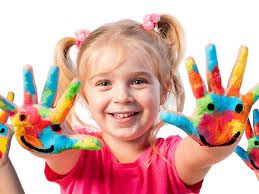
Years 3-5 skills to Develop: Numbers. Basic Literacy. Basic Causality. Imaginative play. Colors.
At this age range, you can start to bring in the models and dice much more concretely. Seeing as how most tabletop games require numeracy and literacy, you can easily design curriculum that teaches basic numbers and basic reading skills. Teaching you child to roll a dice and then count the facings (use dice with easy to read pips rather than Nurgle dice) will very much help their basic counting, and as they get older, you just add more dice, so you are running from 1-6 to 2-12, and of course, if you have other polyhedral dice like a d10 or d20, this is a great way to start introducing numbers and reinforcing the numeric symbols to the concept of the number.
A fun game that has worked for both of my nephews and my son has been to roll a d10 with the numeral and then have them use d6s to recreate that numeral in pips. This again reinforces both the connection between the actual symbol for the number and the act of counting to that number. If you are like me and having several hundred infantry models for a single army (hello Termagants!), having your child roll a dice, identify the number, and then count out that many infantry models is another way for them to make the connection between symbol and object.
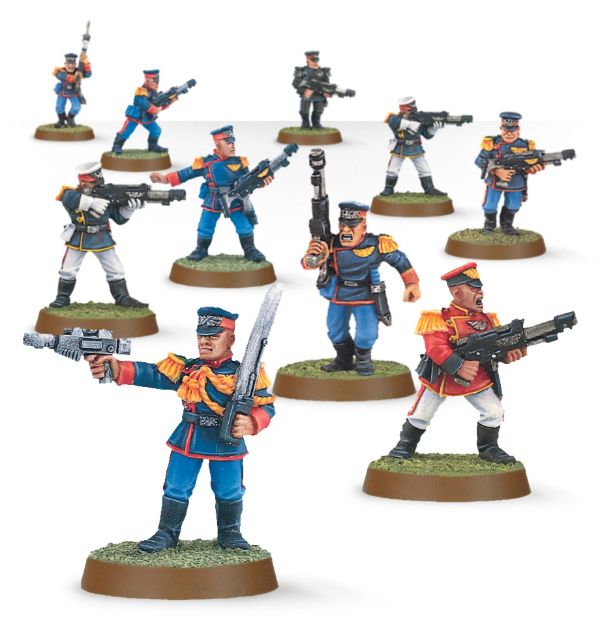
You can also use a board with squares or hexes to teach them counting by rolling a dice and having them move that many squares in any direction, just as long as they are matching the numeral to the physical. This also starts to form the basis for games and such as they start to get familiar with the idea of models and a board as a self-contained space for a specific type of play.
Depending on what books you have, having them read rules or read small sections of the lore (again, your job is to censor as you feel appropriate) is a great way to start finding “sight words”, words that we use a lot like prepositions and conjunctions. They don’t need to really “read” the passage, but if you can get them to find all the “at” or “and”, you are helping them develop an important part of early literacy. You should also be reading to them, and again, just like 0-3, focus on performing the text. You can bring in more conflict, but that’s again your discretion.
This is also a good age to introduce basic Causality. Rolling the dice and having the model move that much shows them a basic cause and effect. Having them “beat” or “knock down” or whatever another model if they roll a certain number also again teaches basic causality and critical thinking. The more that is a game, the more they will engage and internalize what they are learning, so make it fun, and make it as much story-telling as mechanical.
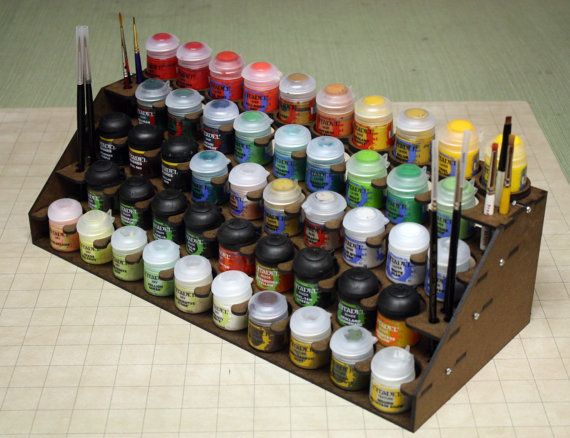
In terms of the hobby, this is a great time to talk about colors. Try painting a model with them. Give them a model (rhino sized or bigger) that you don’t particularly care about (and remember the golden rule: any model you hand a young child is likely going to get damaged, so again, be prepared for that) and then paint alongside them. Since GW paints are acrylic based, be sure they are painting over a safe surface and wearing clothes you don’t care about. To help create Parallel Play, you use the colors that you want for your model, and you have them replicate it. The importance here is on understanding and differentiating colors. You are also helping their fine motor skills by teaching them how to hold and use a paint brush. I did this with my oldest nephew where he painted a large Reaper dragon while I worked on a Hive Tyrant, and so we were using the same colors, but he had his project, and I had mine. It also helped create some agency as he suggested certain colors, and I went with it, even if just for a small design somewhere.
If they are painting their own models in any fashion, it is a good idea to use those models as game pieces in other games if the child wishes to help them create attachment but also let them have their own sense of play and agency, not just living in your own world and hobby.
Finally, this the age where they can really start to imprint on characters in stories, so have time set aside for imaginative play. Have them pretend to be Calgar or Russ, act out scenes, or let them use the models to act out scenes themselves. You should likely focus again on social/emotional intelligence, so getting them to healthily solve problems and conflict as well as negotiate space and feelings. Children learn by playing, so let them play and have fun with the models, even if it is not a structured game.
At this age, for most children, too much structure in their play will be a barrier, so give them freedom to create games as they see fit. What matters most is that you are redirecting their game and energy into meaningful avenues. Meaningful is a vague term because almost all of it is meaningful at the end of the day, so be conscious of your child’s individual talents. They may want to mostly do imaginative play and act things out, and that’s fine, so long as what they act out is teaching something meaningful (how to be brave, how to ask nicely for things, how to react to disappointment, etc). When a child is pretending, they are practicing social and emotional skills, so let them play, but just be mindful of what they are practicing.

Ages 5-8 skills to Develop: Reading, Basic Addition/Subtraction. Imaginative play. Brush control. Acting.
This is a great age for introducing actual game mechanics. By 5, most children can sit still long enough and listen well enough to learn basic rules. This is where you have to get creative and mostly build games yourself by taking rules and stripping them to their most basic form. There are of course board games and card games designed for this age range, so if you can, spread some money to an FLG and get them if you want.
At this age, you can expect much more reading skills and math skills like addition and subtraction, so you can have them practice these skills in a variety of ways. One way is to play a skirmish game with a few models with hit points, so you roll damage and have them do subtraction that way. You can do addition by giving them dice to roll to add together.
A very quick skirmish game using 40K figures I made for my oldest nephew when he was at this age was 4 stats: armor, health, attack, and movement. We made cards (which was a great Arts and Crafts experience) for each model, and then we used an old 4th edition DnD grid as a board with some terrain for flavor, and then had a little battle. You hit people by rolling the number of dice for your “attack” stat, and it hurt them if the added up value was over their “armor” stat. This teaches addition and of course numeral sequencing and relation. As described above, all weapons were damage d6, so roll d6 and subtract the health (subtraction). Movement was a number of d6, so again addition. It was a fun game that didn’t have any other rules except what we made up on the spot, which was great for Imaginative play. He also named all of his fighters and mine, and we performed their actions as we played.
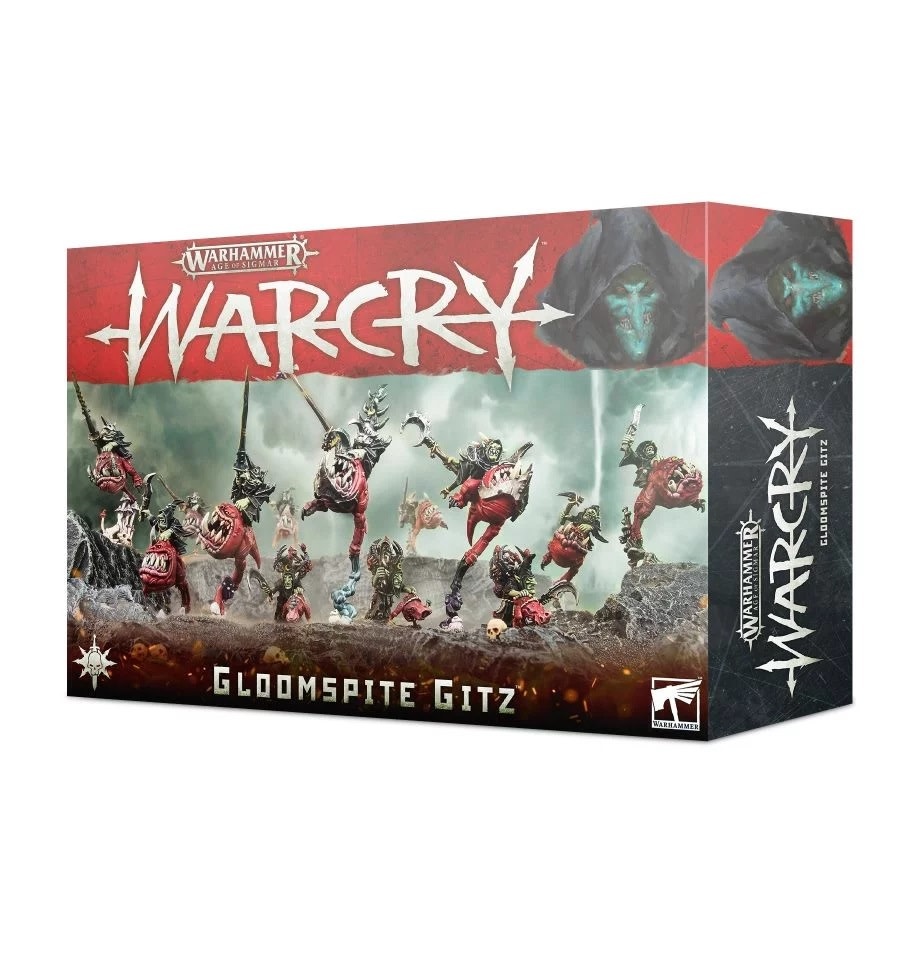
Acting is an important play skill as it teaches empathy, focus, listening and social/emotional intelligence. We would talk in character to each other and perform together, and this made the game more enjoyable but also helped him express his frustrations and emotions in a safe way with some distance, especially when he lost. At this age, a child is going to be more honest about what they are feeling when they can place those feelings on something outside of themselves as that often feels like they have more control over the emotions. Acting also teaches patience as he had to learn to wait for me to respond before responding right back. This also improves general listening skills.
When it comes to the hobby, now we can start with very, very basic color theory. Understanding the mechanical nature of paint like washes versus a base coat, understanding the difference between a primary and a secondary color, and even the concept of contrast and perspective. I did this for one of my cousins that I had to babysit for a while where I would paint a model, and she’d draw it from a different perspective. The art didn’t have to be good, but I tried to get her to match the colors that I was using. This is a good time to get cheaper minis that you maybe don’t care about, but give them free reign to paint as they desire. Depending on the age, this is also when you can have them start helping build models, filing down mold lines, or even sorting bitz.

Ages 8-12 skills to Focus: Reading, probability. Cost-Benefit analysis. Basic Logic. Color theory (intermediate). Technique. Practice. Imaginative writing. Acting.
From my experience, this is where you can get a lot of varied growth, so not everything is going to work for every child, but they will excel at several of these things, which means you can focus there.
By 8, a child should be able to read, so you can have them read aloud curated lore or stories to help foster imagination, but you can also have them read rules to help understand causality and logic. If you are down with the Warhammer Adventure series, this is a good age to introduce it. Especially Games Workshop products tend to be written in conversational English, so it is a bit easier for children to read and get a sense of what is being asked of them. This doesn’t mean they will understand the rules perfectly, but it can start that process. If you really want to get college-prep about it, having them learn to start taking notes from the reading is also a great idea.
You want to make sure that you are reinforcing both a love of imaginative reading, being able to “see” what the words are saying, but also academic reading, being able to clearly understand what the words are conveying in a precise sense. This is also a good time to build vocabulary as you can have them read a paragraph or two and have them look up the definition of words that they do not know and then re-read the paragraphs again to see if they understand how to use those words in context.

This is also a good age to introduce creative writing. Having your child write stories about the lore or about their models is a great way to get them to practice their writing in the technical sense (you can correct for grammar/spelling with them) but also in the more intangible sense of how to put thoughts into a coherent narrative. A lot of young children struggle to put their thoughts into an order that works for others, not just themselves, so having them write about characters or monsters that they love helps motivate them to work through the harder aspects of literacy acquisition as they are going to want you to understand the story, so they are going to write with the expectation of it being read. This connection between what they love and what they do helps establish the central aspect of Subject and Action in grammar.
On the math side, you can start doing probability as their basics should be good, so now you can start to introduce ideas of fractions, percentages, and probabilities. This does not mean an 8 year old is going to understand how to work with probabilities but rather what probability is. Doing things like d3s helps them practice division and rounding as well as understanding what fractions actually are. By this point, the math aspect of the games are relatively set, but you can start working more and more with probability and statistics, which they are going to need by high school. Again, this is not about teaching them how to do this math perfectly but rather get them comfortable with the ideas and build a foundation for their eventual mastery. Teaching them the ever central probability distribution of a d6, 2d6, and a d20 is a great way to prepare them for min-maxing like hell, but it also helps them understand why rolling an 18 on a d20 is so hard. By connecting rules with probability, you can start to make the connections that they will build upon later.

This is also the age where painting can be more or less self-directed and you really can start introducing repetition and practice. You can identify a skill that you want them to learn like base coating or highlighting and have them actively practice it. Again, this is fine motor skills all day, especially with more complicated techniques like highlighting which requires strong brush control. This all depends on your own level of skill, but at this age range, most children can at least learn to do basic coats that you can even use later to develop into a solid model. You can also start to use more advanced vocabulary like a tint versus a shade.
This is also still a very fertile imaginative time for a child, so acting and playing together as you play is a great idea. This is also a great time to really introduce Role-Playing mechanics, not just as playing together but actively playing a game while using imaginative play. This is not easy for a child as they want to be able to freely imagine and play, so having rules restrictions is not something natural, but this the age where that transition can really happen. Using a homebrew version of your favorite system is a good idea to make it as simple as possible, and this is a great way for your child/children to experiment with personality and identity.
This is also the transition to a tender age thanks to hormone shifts, so role-playing is a great way for a child to express frustrations, anxieties, and the like in a healthy way, and often, what happens in the RP session can be an entrance into a more personal conversation.

13-18: Good Luck.
Really, by this age, a standard school curriculum can be delivered online effectively, and chances are, it is going to really stress your kid out as the expectations are going to increase, so really, your game time should be a hobby time. This should be a way to de-stress and enjoy time with family.
That said, a big thing that can be helpful is pushing your child towards Meta-cognition, meaning they understand how they are learning. While you play whatever game you play with them, you need to check in and ask them if they understand what they are doing and what skills are necessary to do it. Ask them what they can do to improve those skills. Have them think about what the game is teaching them, and this will help them identify skills that they are either want to improve or skills that they excel at and can further develop. You should also ask how these skills are relevant to their school work and their own curriculum. The more a person understands what they are learning and how they are learning it, the more likely they are to actually learn the material because they can identify what they need to know, what they do not know, and what they need to do to bridge that gap.
I hope this is helpful for you if you are at home with your children or if you have younger people in your family. Remember: this is not about replacing a school’s curriculum but rather supporting it in a way that lets you engage your little loved ones with what you care about and are comfortable with. If nothing else, this is about you finding a way to both bond with those in your family by sharing something important to you while also helping them stay on pace with school. Of course, what matters most is that you are bonding with your family, and from my experience, shared hobbies goes a long way to creating lasting memories. Thanks for reading, and stay safe out there, and if you can, make sure to support the many, many small businesses that keep our hobby thriving.
And remember, Frontline Gaming sells gaming products at a discount, every day in their webcart!




Remember every child is different and may/may not be interested in what you do unless you have a “power cut”* restricting their use of tv, tablets or ‘phones. (* disconnecting the modem helps).
The longer we’re isolated the greater the chance of them looking for other avenues of socializing – even with their parents.
I’ve got 4 kids at home ages 1 – 8, so this is really helpful. Lots of great advice in there, thanks!
this article was wonderful and heartwarming, thank you!
“If you want to engage a child of this age, the best thing that you can do is to read to them.”
So much this.
Danny knows my credential as a teacher. I would add:
” 5 – 8 ” years
Go with 3 kinds of reading experience.
a. Children read those little practice readers or Dr. Seuss level books themselves, “Green Eggs and Ham”, “One Fish, Two Fish … “. Older folks might remember “Dick and Jane”. Rereading what they know and are comfortable with builds confidence. They should read to someone, even a stuffed animal. No joke.
b. They read to you, the parent, or a sibling. The book should be at a little more challenging level. Like maybe a challenging word per page, not enough to impede understanding. “Berenstein Bears” or some of the weightier Dr. Seuss. When coming across a word they don’t know, you supply the quick pronunciation and meaning, and maybe back track a sentence or so for context meaning …
(dropping edu-speak words here, look-out!)
Again, this is more good bonding time for you both and they are stretching their skills into new territory with you right along their side to guide.
c. You read to them from higher content. It’s story telling. While they are listening to you, they gain the literary background of plot, dialogue, human learning, suffering, joy and triumph. Culture. It can even be a tiny bit over their heads.
They’ll go back to those books when they’re older and be able to fill in the gaps.
When I was very young, mom read Lord of the Rings to my brother and I sat along side. I was lost for most of it, but the memory of it, and wanting to re-explore certainly help turn me in the fantasy nerd I am today.
I’ve taught primary for 22+ years, from 5 years to 15 year old middle school, or TK through 8th grade.
And this article was a great idea. Well done, Professor Ruiz.

Casey H
Fantastic article.
I was 14 when my little brother was born. I pretty much followed this advice as he grew up. It was such a good bit of bonding and was extremely beneficial to him. He still talks about the first model he ‘painted’.
I had him sit in my lap when he was 3, and let him do the base paints on a Carnifex. The body black and the carapace red.
Another thing we should do, was act out the narratives as he got older. Move the models on the table, and take time to act out what the rolling of the dice meant.
There is honestly so much warhammer can offer to younger children that is very beneficial.
Thank you for writing this
Good read – but Oh Come On Cali? Total slander.